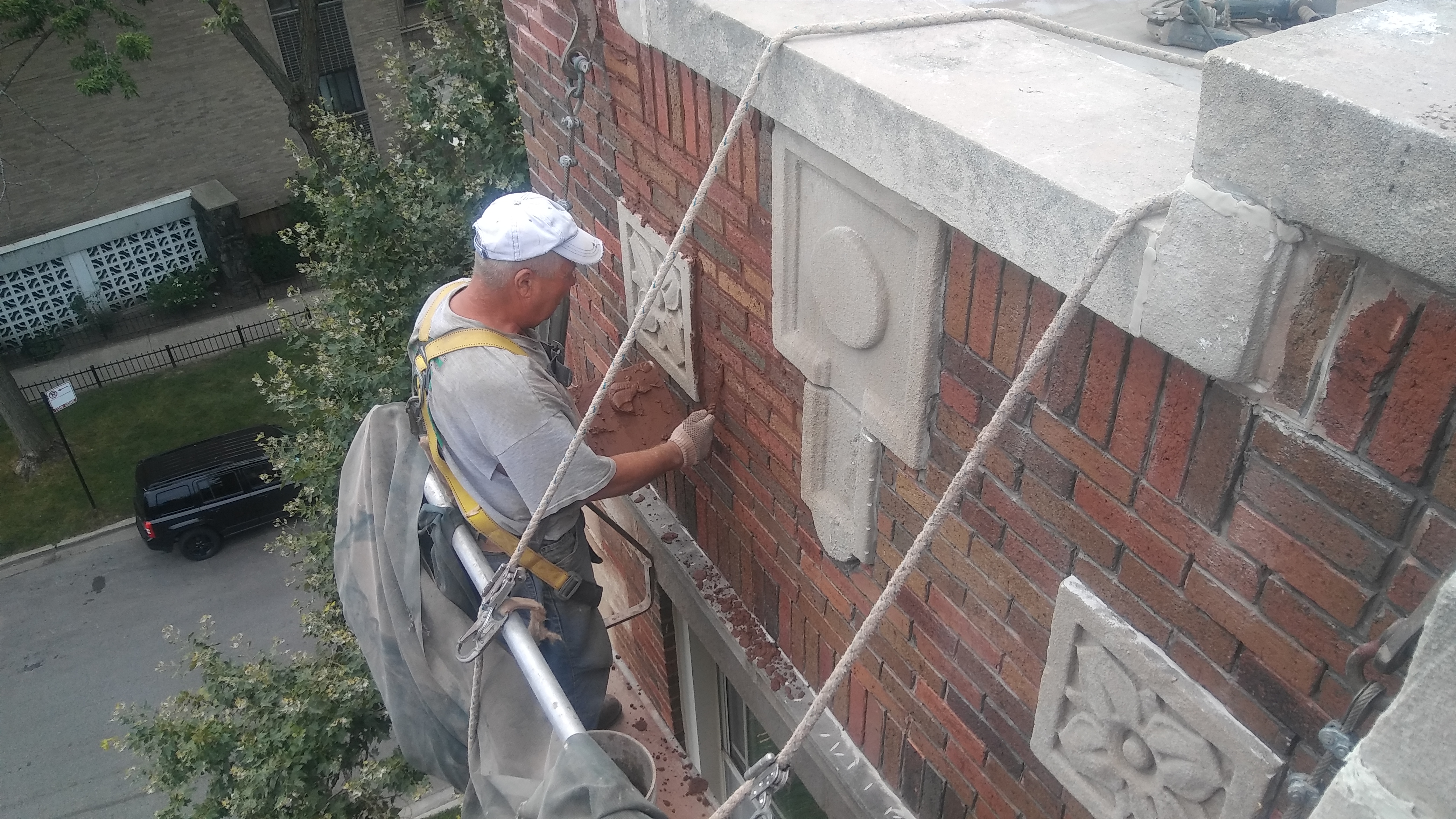The Beauty and Significance of Masonry
Welcome to the world of masonry, where history, art, and durability come together to create timeless structures. From the grand cathedrals of Europe to the charming brick homes on your street, masonry has a unique place in our architectural heritage. In this guide, we’ll journey through the captivating world of masonry maintenance. We’ll explore not only how to care for structures but also why it’s crucial to preserve them.
Why Masonry Matters
Masonry is more than just an assortment of bricks, stones, or concrete. It’s the embodiment of human ingenuity, as well as artistry. These structures tell stories of different eras and cultures, and they continue to captivate us with their strength and beauty. Whether you’re admiring the precise brickwork of a historic church or the charm of a stone farmhouse, masonry stands as a testament to human achievement.
Why Maintenance is a Must
Masonry’s enduring appeal is due to its durability. Yet, even the sturdiest of structures require care. This guide will show you how to safeguard masonry’s elegance, and why it’s essential to maintain these landmarks for future generations. So, let’s embark on this journey to unlock the secrets of masonry maintenance.
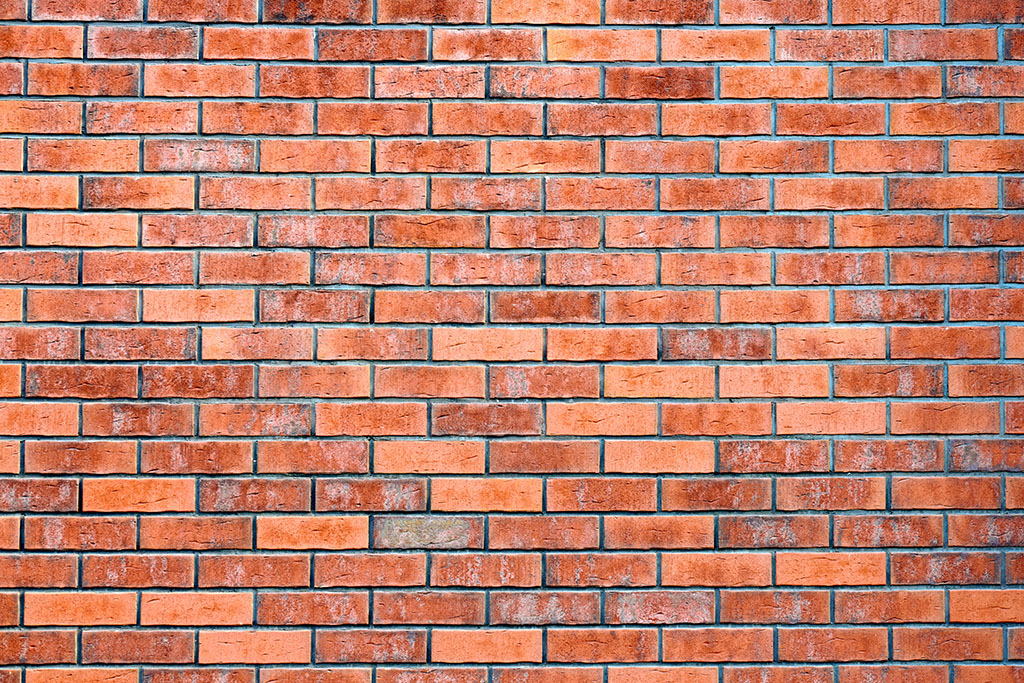
Understanding Masonry Materials
Before we dive into maintenance, it’s important to understand the foundation: the materials that make up masonry.
The Big Three: Brick, Stone, and Concrete
Brick: Bricks are the building blocks of masonry. They’re known for their charm and are commonly used in homes and historical buildings. The durability and aesthetic appeal of brick make it a popular choice. However, different types of brick vary in their properties and maintenance needs. Whether it’s clay bricks, concrete bricks, or adobe bricks, Casey Tuckpointing has got you covered.
Stone: Natural stone is another fundamental masonry material. It’s used to create structures that exude grandeur and timelessness. Stone can vary from granite, with its exceptional strength, to limestone, which offers a soft and elegant appearance. Each type of stone comes with its own characteristics and requires unique maintenance.
Concrete: Modern masonry often incorporates concrete for its versatility and strength. Concrete structures can range from industrial buildings to contemporary homes. However, the properties of concrete can vary significantly based on its composition. Understanding the nature of your concrete is vital to determining the right maintenance practices.
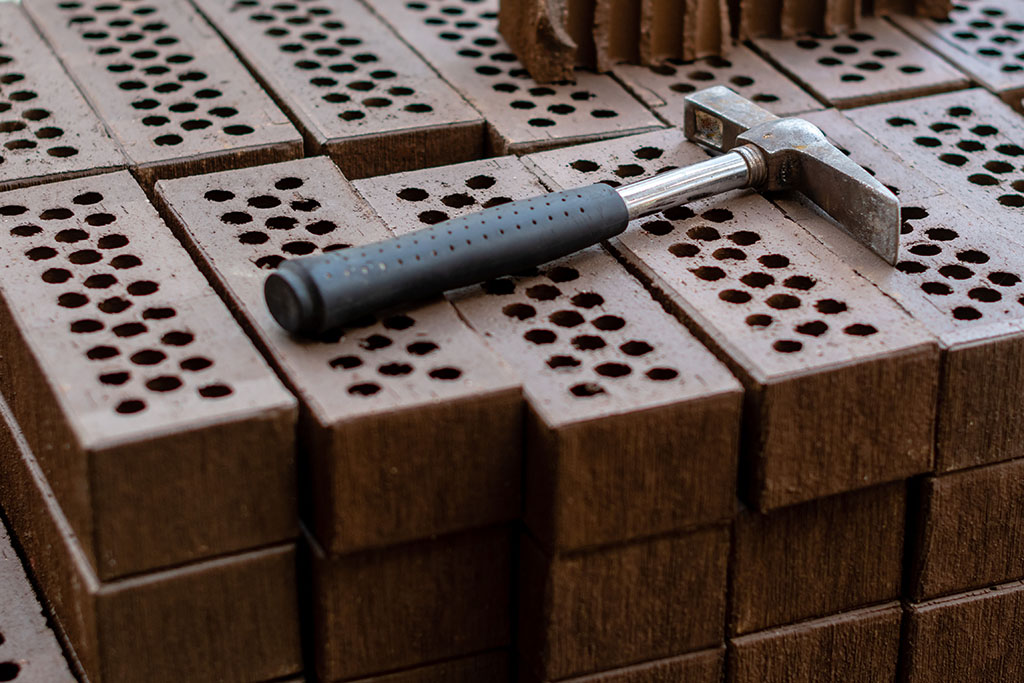
Routine Maintenance
Regular check-ups are the key to masonry’s long-lasting beauty. It’s like visiting the doctor, but for buildings!
Check It Out
Regular inspections are your first line of defense when it comes to maintaining masonry. They’re similar to visiting the doctor for an annual check-up. These inspections allow you to catch any potential issues early, preventing them from becoming costly problems. Whether it’s checking for cracks, examining mortar joints, or assessing the condition of the facade, regular inspections should become a part of your maintenance routine.
Getting Clean
Masonry structures can accumulate dirt, mold, and even graffiti. Cleaning is an essential part of maintenance to preserve their beauty. Depending on the type of material and the specific issue, there are different approaches to cleaning – whether it’s using power washing for stubborn stains or opting for a gentler approach.
Preventing Woes
The old adage “prevention is better than cure” holds true in masonry maintenance. Water damage, in particular, can be a significant problem. Proper preventative measures can save you time, money, and stress in the long run.
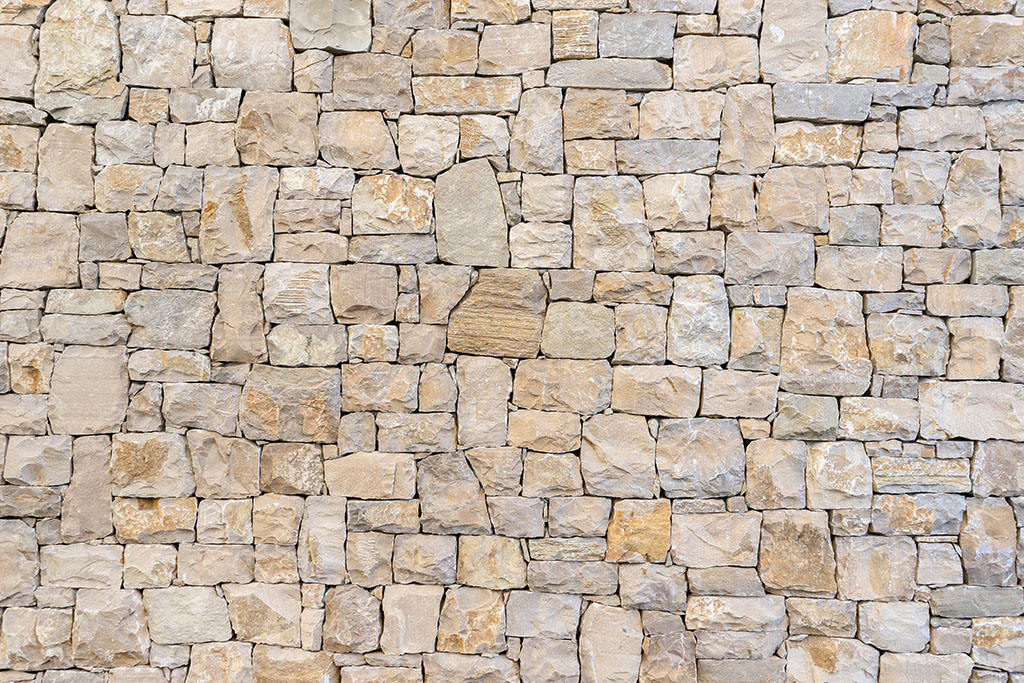
Masonry Maintenance – Repair and Restoration
There are times when masonry needs more than just a little tender loving care. We’ll be your guide on these journeys of repair and restoration, where we’ll delve into recognizing the signs of trouble and understanding the complex process of restoration.
Recognizing the Signs
Sometimes, despite your best efforts in regular maintenance, masonry can develop issues over time. These issues might manifest as cracks, crumbling mortar, or even structural instability. Recognizing these signs early is crucial for addressing maintenance issues effectively and in a timely manner.
The Restoration Odyssey
Restoration isn’t a one-size-fits-all solution. Each masonry restoration project is unique and multifaceted. This process can include re-pointing, replacing damaged elements, and addressing structural concerns, each with its own set of challenges. This means that when it’s time for restoration, understanding the complexity of these projects is essential.
Preserving Time’s Artwork
When it comes to historical masonry, preserving the original aesthetics is often a top priority. It’s about respecting and embracing the artistry and craftsmanship of the past. Maintaining historical accuracy in the masonry’s appearance involves using compatible materials, retaining unique architectural features, and ensuring the structure remains historically accurate. This work is essential for preserving the cultural and architectural heritage tied to these remarkable buildings.
So, whether you’re dealing with minor repairs or going on a grand restoration project, understanding the signs and the restoration process is your first step to ensuring the longevity and beauty of masonry structures.
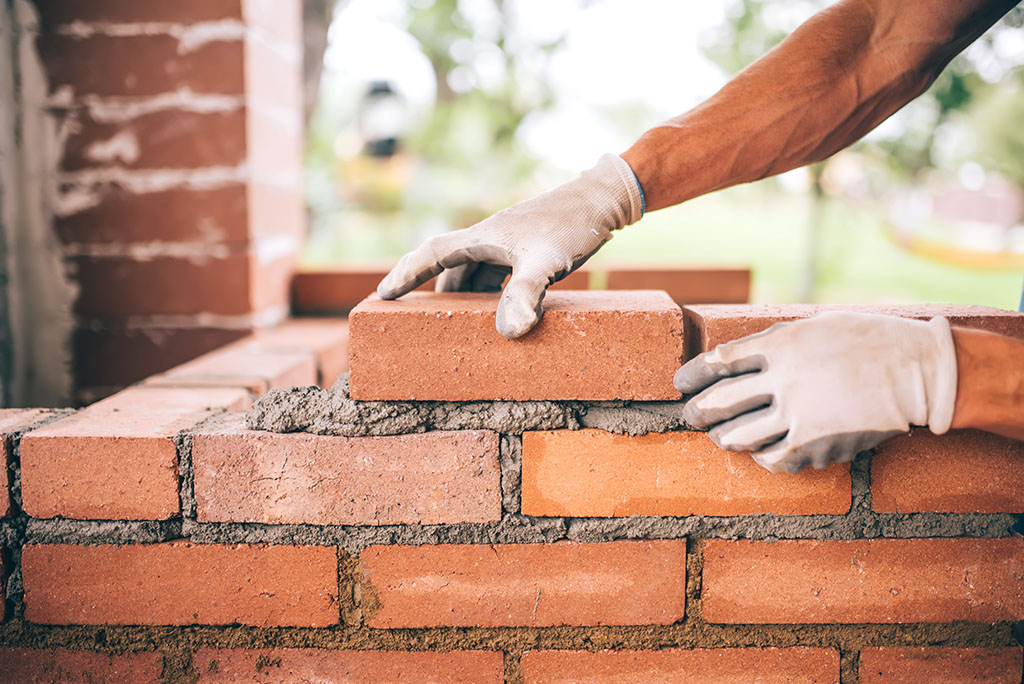
Preserving Historical Masonry
Let’s step into the captivating world of preserving historical masonry. It’s a journey through time, where we explore the intricacies of maintaining these structures and the significance of honoring the past.
The Time Machine
Historical masonry structures are like time machines, connecting us with the stories of yesteryears. When you undertake the task of preserving these architectural gems, you’re not just maintaining walls and bricks; you’re preserving a piece of history.
1. Finesse and Expertise: Historical masonry is often characterized by unique craftsmanship and architectural details that reflect the era it was built. Preserving this legacy requires a delicate touch and specialized expertise. Professional masons who understand historical restoration are like custodians of time, ensuring that the masonry remains a living testament to the past.
2. Materials Matter: Historical masonry often features materials that are no longer in common use. The preservation process must involve identifying these materials and sourcing appropriate replacements. It’s like finding the missing pieces of a historical puzzle, ensuring that the structure remains true to its origins.
3. Stories in the Stones: Every scratch, every chip, as well as every weathered surface of historical masonry holds a story. Preserving these marks, instead of erasing them, is part of the charm. It’s akin to protecting the wrinkles of wisdom on an old person’s face.
Aesthetic Appreciation
Maintaining historical accuracy in masonry isn’t just about bricks and mortar; it’s about preserving the aesthetics that transport us back in time. It’s about keeping the visual narrative of history alive.
1. Original Aesthetics: Historical masonry structures often have distinctive architectural features that define their era. This could be ornate stonework, intricate brick patterns, or unique mortar finishes. When preserving historical masonry, it’s crucial to replicate and retain these original aesthetics. It’s like restoring an old painting, ensuring that every brushstroke remains true to the artist’s vision.
2. Artistry and Craftsmanship: The craftsmen who built historical masonry structures were artists in their own right. Preserving these structures means respecting their artistry. It’s like protecting a priceless sculpture, ensuring that every curve and contour remains a masterpiece.
3. Telling a Visual Story: Historical masonry tells a visual story of its time. Every addition, alteration, or repair becomes a chapter in this narrative. Preserving historical masonry is about ensuring that these chapters seamlessly flow together, creating a harmonious and timeless tale. It’s like conserving an ancient manuscript, making sure that every word remains legible and meaningful.
In conclusion, preserving historical masonry isn’t just about maintaining old buildings; it’s about safeguarding our connection to the past. It’s about respecting the hands that built these structures and appreciating the stories they tell. Every crack, every mark, and every unique detail in historical masonry is a brushstroke on the canvas of history, and it’s our privilege to protect this masterpiece.
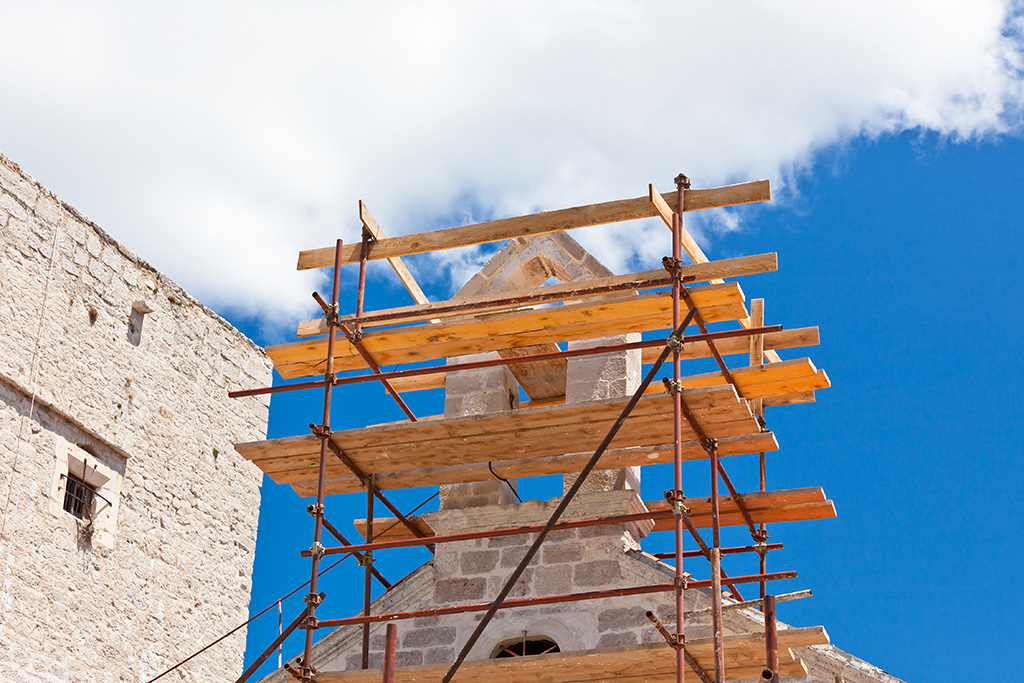
DIY vs. Professional Masonry Maintenance
DIY: What Can You Do?
Many masonry maintenance tasks can indeed be tackled by homeowners. Regular inspections, cleaning, and addressing minor issues are within reach for those with a bit of DIY spirit.
1. Regular Inspections: The first line of defense against masonry issues is a vigilant homeowner. Regularly inspect your masonry for cracks, loose mortar, or damaged bricks or stones. Identifying issues early can prevent more extensive damage.
2. Cleaning: Keeping your masonry clean not only enhances its appearance but also extends its lifespan. A stiff brush, a gentle detergent, and some elbow grease can effectively remove dirt, moss, and algae. Just remember not to use harsh chemicals or high-pressure washers, as these can damage the masonry.
3. Minor Repairs: Small cracks or loose mortar can be repaired by a homeowner with some DIY experience. You can find masonry repair kits at most hardware stores. Just follow the instructions carefully.
Calling in the Pros
However, there comes a point when professional masonry services are necessary. The DIY approach is excellent for routine maintenance, but for more complex issues and extensive repairs, it’s time to call in the experts.
1. Structural Issues: If you notice significant structural problems, such as sagging walls, large cracks, or a chimney that’s leaning, it’s essential to bring in professional masons. These issues can pose safety risks and require specialized expertise to rectify.
2. Tuckpointing and Re-Pointing: These are specialized skills. If your masonry has failing mortar joints, it’s best to have a professional re-point or tuckpoint them. This involves removing damaged mortar and replacing it with fresh mortar, a job requiring precision and experience.
3. Historical Restoration: When dealing with historical masonry, it’s crucial to maintain the authenticity of the structure. Professionals understand the nuances of historical restoration, ensuring that the original aesthetics and materials are preserved.
4. Waterproofing: Professional masons use specialized materials and techniques for effective waterproofing. This is crucial for preventing moisture infiltration, which can cause significant damage over time.
5. Expertise and Equipment: Professional masons have access to the right tools and materials. They understand the intricacies of masonry maintenance, ensuring that the work is done correctly the first time.
In summary, the DIY approach is suitable for routine masonry maintenance, but for more complex issues or specialized tasks, it’s best to call in professionals, such as Casey Tuckpointing. When selecting experts, thorough research and careful consideration are key to ensuring that your masonry receives the care it deserves.
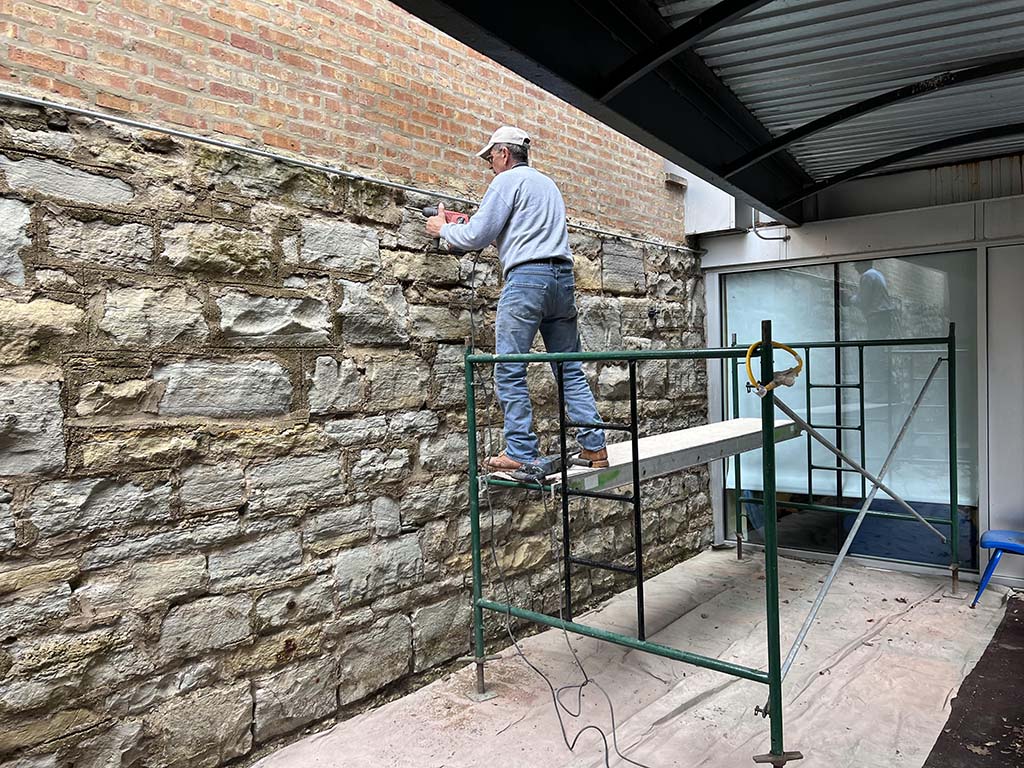
Masonry Maintenance in Modern Construction
Masonry, a centuries-old building technique, is not immune to the winds of change. In recent years, masonry maintenance has been undergoing a transformation, adapting to the needs, as well as priorities of modern construction. These innovations not only extend the lifespan of masonry structures but also align with the global shift towards sustainability and energy efficiency.
Sustainable Materials
One of the prominent trends in modern masonry maintenance is the use of sustainable materials. Masonry, as a construction technique, is inherently eco-friendly due to its durability and resistance to wear and tear. However, modern masonry takes sustainability a step further. Today, there’s a growing emphasis on using materials that have a minimal environmental impact. This includes the use of recycled, as well as locally sourced bricks and stones, which reduces the carbon footprint associated with transportation and production.
Energy-Efficient Masonry
Energy efficiency is a central concern in contemporary construction. When it comes to masonry, innovations are reducing energy consumption and enhancing the thermal performance of buildings. Masonry structures often feature excellent insulation properties, helping to maintain comfortable indoor temperatures. However recent advancements, such as improved insulation materials and more efficient sealing techniques, make masonry buildings even more energy-efficient.
Architectural Adaptations
Masonry maintenance now goes hand in hand with architectural adaptations. Today, architects and designers also are using masonry in innovative ways to create more sustainable buildings. Masonry can help regulate temperature fluctuations, reducing the need for energy-consuming heating, as well as cooling systems. For example, thermal mass masonry walls can store and release heat over time, moderating indoor temperatures naturally.
Sustainable Restoration
In addition to new construction, modern masonry maintenance also extends to the restoration of historic structures. Preservationists are increasingly adopting sustainable practices when restoring older masonry buildings. This includes using materials that closely match the originals, as well as employing techniques that minimize environmental harm. These efforts help protect the cultural and historical value of masonry buildings while aligning with contemporary sustainability goals.
Green Roofs and Masonry
Green roofs, an increasingly popular architectural trend, complement masonry structures wonderfully. These roofs, covered in vegetation, not only add an aesthetically pleasing natural element but also offer insulation and energy-efficient benefits. Masonry structures provide the stability and load-bearing capacity required for green roofs, further emphasizing the synergy between masonry and sustainability.
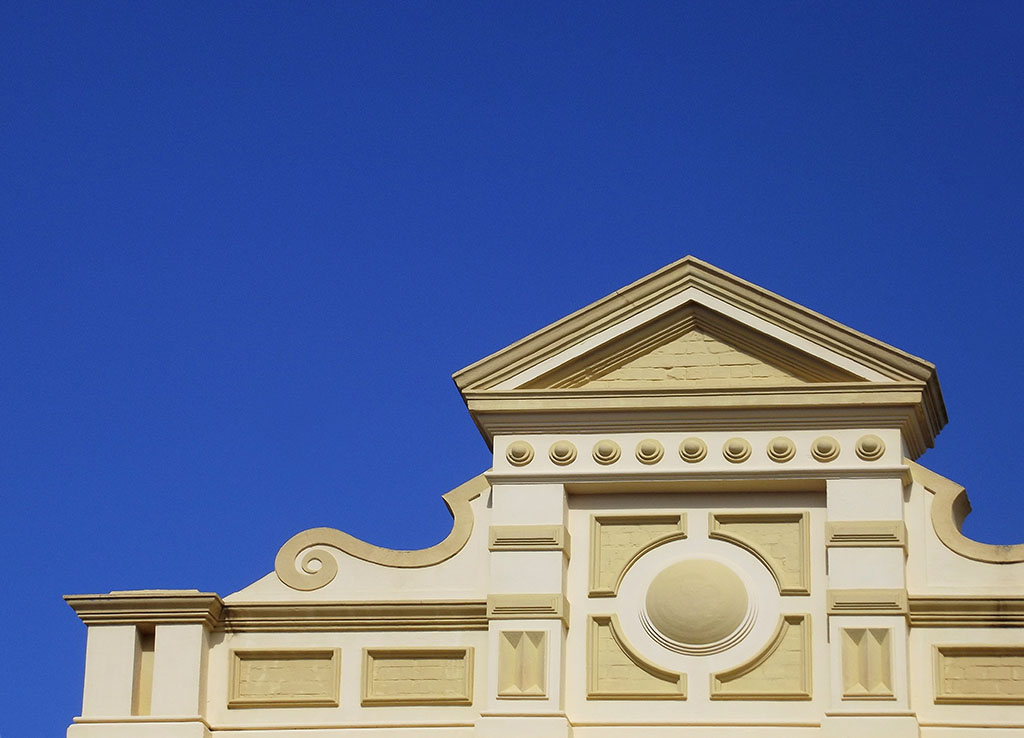
Celebrating Masonry’s Charm
Key Takeaways
As we wrap up this guide, we’ll summarize the key takeaways you’ve gained throughout the chapters. Understanding masonry materials, routine maintenance, repair and restoration, historical preservation, DIY vs. professional services, and modern trends will help you to make informed decisions about masonry maintenance.
Preserving Our Heritage
We’ll reiterate the importance of preserving masonry structures not just for their durability but also for the beauty, history, and artistry they represent. Masonry is a testament to human ingenuity and creativity, and by maintaining it, we contribute to preserving our architectural heritage for generations to come.
Appreciating Masonry’s Beauty
In closing, we’ll encourage you to appreciate the beauty of masonry structures. Their charm, strength, and historical significance enrich our lives, and by caring for them, we continue to celebrate their timeless beauty.
Casey Tuckpointing is here to help you start your journey of understanding, appreciating, and preserving masonry. If you have any questions, concerns, or want further guidance on specific masonry issues, please feel free to reach out. The world of masonry awaits your exploration and care.
CONTACT CASEY TUCKPOINTING TODAY!

